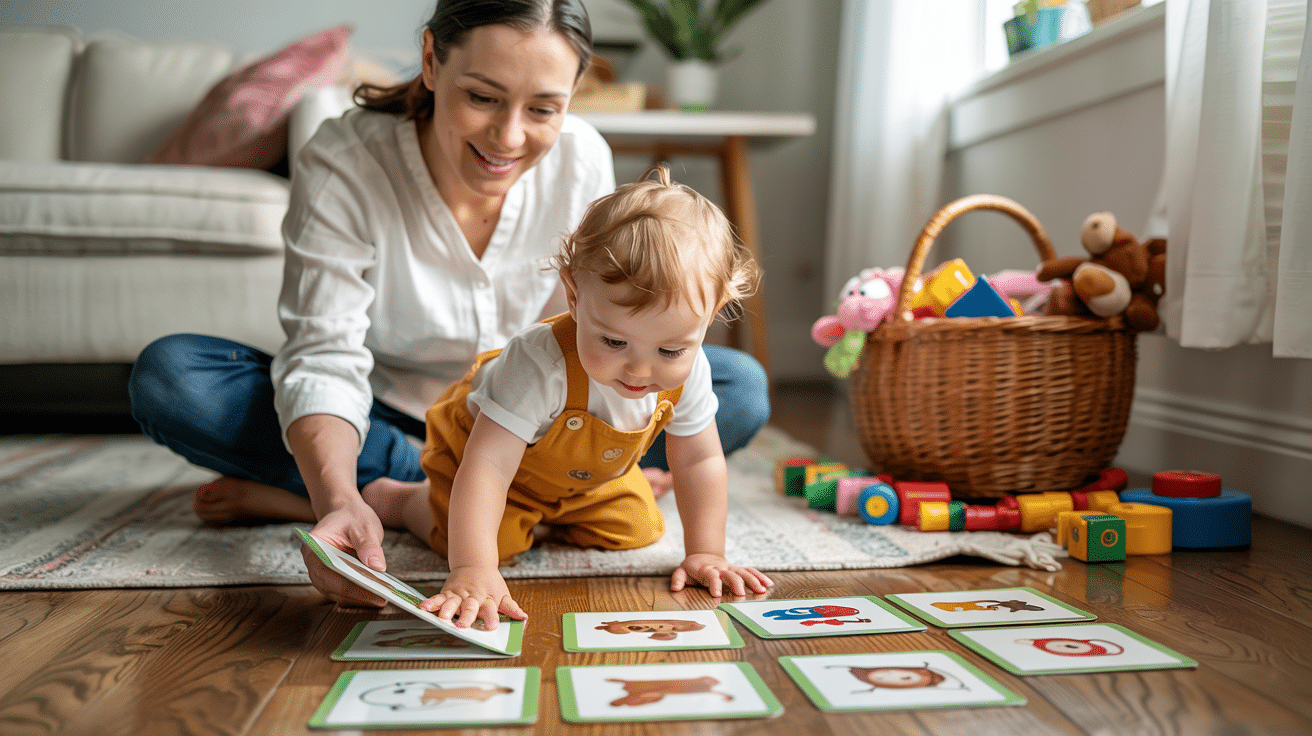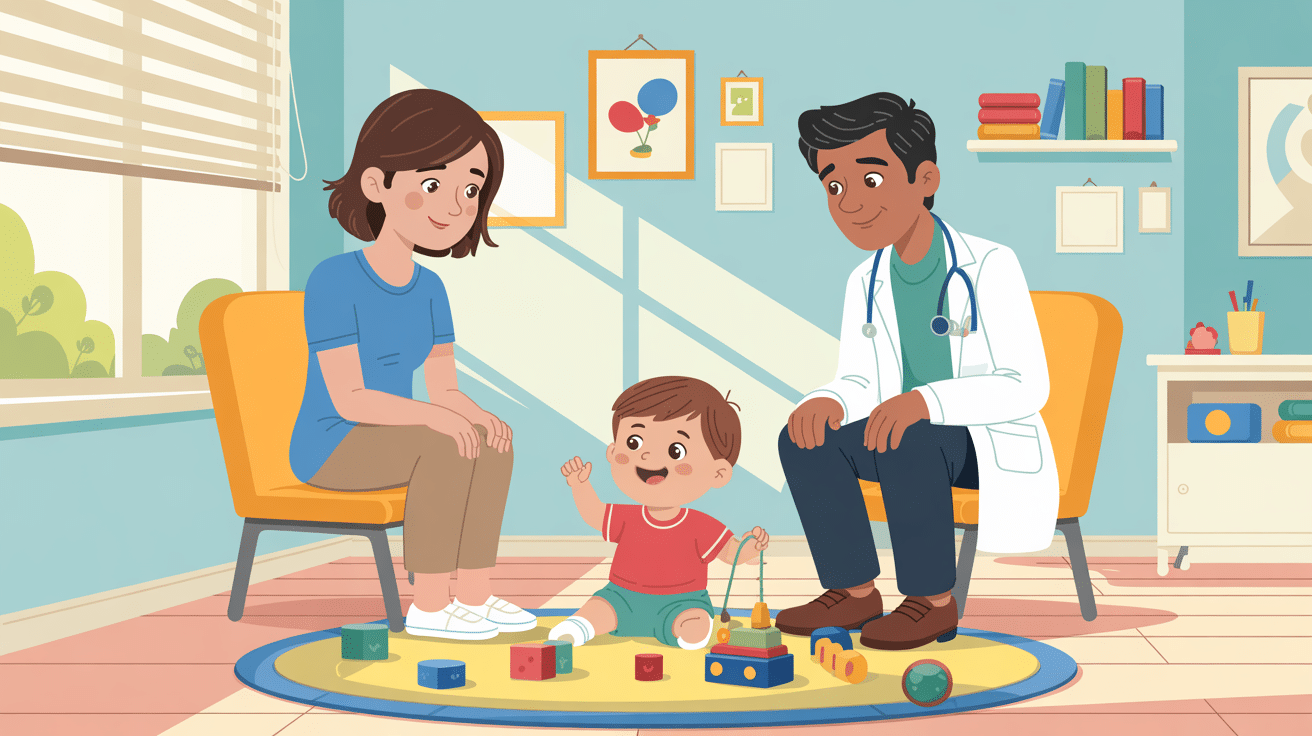Is your 2-year-old not listening to simple requests? You tell them to put away toys, and they run in the opposite direction. This behavior can test even the most patient parents.
But here’s something most parents don’t know: toddlers aren’t being difficult on purpose. Their brains are still developing, making it hard for them to follow directions consistently.
Good news – you can turn this situation around with effective strategies that work with your child’s natural development, not against it.
This guide shows you why your 2-year-old might ignore you, practical tips to improve cooperation, fun activities that build listening skills, and signs that might indicate when to seek additional help.
Read on to learn about techniques that have helped countless frustrated parents modify daily struggles into more peaceful interactions with their little ones!
Understanding Toddler Behaviour

When your 2-year-old’s not listening becomes a pattern, it helps to understand what’s happening in their brain.
Toddlers at this age are learning independence but lack the mental tools to process multiple instructions. Their focus shifts quickly, and they often can’t remember what you asked just moments ago.
Physical growth also plays a role in listening challenges. Toddlers feel strong urges to move, touch, and test boundaries.
This natural stage of growth makes sitting still or following directions difficult. They’re not being bad; they’re being two! Their actions match their current stage of brain development.
Here’s a quick look at common toddler behaviors and what they might mean:
| Behavior | What It Often Means |
|---|---|
| Running away when called | Testing independence |
| Saying “no” to everything | Practicing new language power |
| Refusing to follow simple directions | Limited attention span |
| Melting down when redirected | Emotion regulation is still developing |
| Selective hearing (responds to fun topics only) | Processing priorities based on interest |
| Ignoring requests when playing | Deep focus on current activity |
Understanding these patterns helps parents respond with patience instead of frustration when facing a 2-year-old not listening.
Common Reasons Your 2-Year-Old Might Not Be Listening

Here are the main reasons your little one might seem to ignore your words:
- Short attention span: A 2-year-old can focus for about 4-6 minutes at most. When you talk while they’re engaged with toys, your words often don’t register in their busy minds.
- Language development: They understand more words than they can say, but complex sentences still confuse them. Your child might miss your point if you use too many words or abstract concepts.
- Testing boundaries: Two-year-olds need to figure out rules and limits. When they ignore instructions, they’re often checking what happens next, not being naughty.
- Sensory input overload: Too much noise, movement, or visual stimulation can make it hard for toddlers to pick out your voice from all the other information their brains are processing.
- Physical needs: Hunger, tiredness, or discomfort can make listening nearly impossible for young children who can’t yet identify or express these feelings well.
Recognizing these factors helps parents adjust their approach instead of taking the not-listening personally.
2-Year-Old Not Listening: Smart Tips That Work

When your 2-year-old seems to have selective hearing, these practical tips can help turn things around. Each strategy works with your child’s developmental stage rather than against it:
1. Get to eye level: Kneel down and make eye contact before giving instructions. This simple connection helps your words reach your child more effectively.
2. Use fewer words: Keep directions short and clear – “Shoes on” works better than long explanations about why we need to wear shoes to go outside.
3. One step at a time: Break tasks into small parts. “Put the block in the bucket” works better than “Clean up all your toys.”
4. Give time warnings: A heads-up before transitions helps toddlers prepare mentally. “Two minutes until cleanup” reduces resistance.
5. Offer choices: “Do you want the red cup or blue cup?” gives control while still moving toward your goal.
6. Make it fun: Turn tasks into games. “Can you hop like a bunny to the bathroom?” makes cooperation more likely.
7. Use visual cues: Point, gesture, or show pictures of what you want. Visual information is processes differently than words.
8. Sing instructions: Many toddlers respond better to singing than speaking. Music activates different brain areas.
9. Reduce background noise: Turn off the TV or music when giving important directions so your voice stands out.
10. Check understanding: Ask them to repeat back what you said in their own words to confirm they got the message.
11. Model listening: Show how you listen to them carefully, setting an example of the behavior you want to see.
12. Praise specific listening: “You came right away when I called!” This reinforces good listening habits.
13. Use when/then statements: “When you put on pajamas, then we can read a story” creates clear cause and effect.
14. Stay consistent: Apply the same expectations every time to help your toddler learn the rules.
15. Pick your battles: Save firm directions for safety issues and be flexible on minor matters.
16. Use touch gently: A light hand on the shoulder can help focus attention before speaking.
17. Set routines: Regular schedules help toddlers know what to expect, reducing the need for constant directions.
With patience and these targeted techniques, most parents see gradual improvements in their 2-year-old’s listening skills. Remember that development happens at its own pace; your consistency matters more than quick results.
Fun Activities to Encourage Listening in 2-Year-Olds

If your 2-year-old not listening has become a daily challenge, these playful activities can help build their listening muscles while having fun together.
Activity 1. Simon Says With a Twist
Turn the classic game into a toddler-friendly version with simple, silly actions they’ll love to copy.
- What you’ll need: Just yourselves and some space to move around
- How to play: Start with “Simon says touch your nose” and show them how. Keep commands very simple – jump, sit, clap. Skip the “tricky” part of the game until they’re older.
Activity 2. Musical Freeze Dance
This activity teaches listening for cues while burning energy in a way toddlers love.
- What you’ll need: Music player and some upbeat songs
- How to play: Dance while the music plays. When you pause it, everyone freezes. Make funny frozen poses to keep interest high.
Activity 3. Sound Hunt
This game sharpens listening skills while satisfying their love of finding hidden things.
- What you’ll need: A small musical toy or ticking timer
- How to play: Hide the sound-making object while your child covers their eyes. Have them follow the sound to find the hidden gem.
Activity 4. Whisper Walk
This activity teaches volume control and focused listening in an exciting way.
- What you’ll need: No materials – just you and your child
- How to play: Whisper directions as you walk together: “Let’s tiptoe to the kitchen.” Use very soft voices that require careful listening.
Activity 5. Animal Action Game
Combines listening practice with their natural love of animals and movement.
- What you’ll need: No special items required
- How to play: Call out animals for them to pretend to be: “Hop like a frog” or “Roar like a lion.” Switch quickly to keep them paying attention.
These games make listening practice feel like playtime, not work. Over time, these fun moments help build the skills needed when your 2-year-old’s not listening becomes a real concern.
When to Be Concerned and Seek Professional Help

While not listening is typical for 2-year-olds, certain patterns might signal something beyond normal toddler behavior.
Most toddlers show selective listening by responding to fun topics while ignoring cleanup requests. This is normal development. However, watch for these signs that might indicate a need for additional support:
- Doesn’t respond to their name consistently by age 2
- Shows no interest in other children or shared activities
- Cannot follow even the simplest one-step directions by 30 months
- Doesn’t use two-word phrases by their second birthday
- Losing skills they once had (words they used to say, gestures they used to make)
- Shows extreme frustration when routines change
- Makes little or no eye contact during interactions
If you notice several of these signs, consider talking with your pediatrician. Early help makes a big difference.
Remember that most listening problems at this age are simply part of normal toddler development and will improve with time and patience.
The Bottom Line
When your 2-year-old seems deaf to your requests, remember they’re not ignoring you on purpose. Their brains are simply working through an important developmental stage.
The strategies we’ve covered, from getting on their level to turning directions into games, all work with your child’s natural growth process. Start with just one or two approaches that feel right for your family situation.
Most importantly, be patient with yourself and your little one. The not-listening phase is temporary, though it rarely feels that way in the moment!
What works best with your toddler? Share your success story in the comments below. Other parents on this same path would love to hear what’s working in your home.















